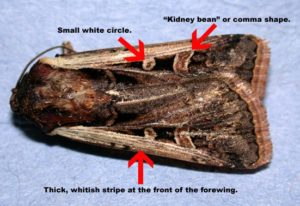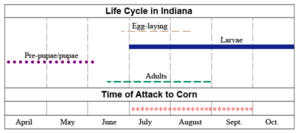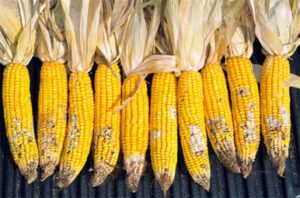Guest Blog from Spensa Technologies
Blog by Jason Tennenhouse, Spensa Technologies
As corn harvest is around the corner, it’s important to be aware of some of the later season pests. One such insect is the Western Bean Cutworm, which is a moth species that’s endemic to the Western parts of the United States, but has recently (since 2000) spread to states including Indiana, Iowa, Minnesota, Illinois, Missouri, Wisconsin, Michigan, and Ohio.
The one generation of annual Western Bean Cutworm feeds on corn and soybeans and typically flies from early July through the end of August, meaning we still have several weeks of flight time left for the insect yet this growing season.
Identifying and proactively treating the Western Bean Cutworm is critical to ensure your corn yield isn’t negatively affected by the pest. In this article, we’ll explore how to identify the pest, what to look for in terms of damage, and share a few prevention tips.
Identifying The Western Bean Cutworm
What should you look for when identifying the insect? Purdue University shares the following key identifications of the pest, including:
● Primarily grayish-brown in color with a wing-span of approximately 1-1/2″
● Whitish stripe at the front of the forewing with two cream-colored, outlined shapes immediately behind
● Circular spot approximately halfway along length of forewing
● A kidney-shaped mark along the same line, approximately 2/3 of the way to the wingtip

The Western Bean Cutworm eggs are laid on upper surfaces of leaves, often on leaves near the whorl that have not unfolded completely. The eggs are laid in masses of 20-200, but usually average around 50 and within a week, eggs develop a purple coloration, indicating that hatch is imminent. Soon, larvae will move into protected areas of the corn plant, feeding on leaf tissue, fallen anthers/pollen and silks on their way to their destination: the developing ear of corn.

Purdue University developed a Life Cycle chart of the Western Bean Cutworm specifically for Indiana, detailing out the the stages including pupae, egg laying, larvae, adult, along with the “Time of Attack to Corn” eye chart:

Damage Caused By The Western Bean Cutworm
The damage caused by the insect can be severe, but also patchy, depending on where the pest feeds. Purdue University explains that sometimes, multiple larvae may feed on a single plant or ear of corn, thereby causing extensive damage to that plant. In addition, there is likely considerable inter-plant movement early in life which results in infestation of nearby plants as well. It’s important to note that most feeding (and therefore damage) is concentrated on the ear of corn.

Purdue’s yield studies conducted in Iowa and Nebraska have shown that an average of one larva/plant throughout the field may cause yield loss of approximately 4 bu/acre.
What is the damage you can expect from the Western Bean Cutworm?
● Prone to various types of molds
● Decreased grain quality of food-grade corn varieties
● Dry husks (most noticeable at harvest)
Prevention Tips For Western Bean Cutworm
1. Identify whether your region is predicted to (or already does) have issues with the Western Bean Cutworm this season
2. Become familiar with the signs of what to look for as it pertains to the various generations of the Western Bean Cutworm
3. Deploy an electronic smart trap, like Spensa’s Z-Trap in partnership with Spectrum Non-GMO Seed, to automate the process of insect trapping and counting for pests like the Western Bean Cutworm, European corn borer, and Corn Earworm
4. Use a scouting solution, like Spensa’s OpenScout, or employ a scout to accurately track, monitor and make important control decisions throughout the entire growing season
Will Your Crop Be Affected By The European Corn Borer?
Want to be able to trap the European corn borer and make better, more informed decisions about your crops? Learn more about how Spensa’s Z-Trap, in partnership with Spectrum Premium Non-GMO here.

